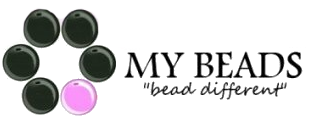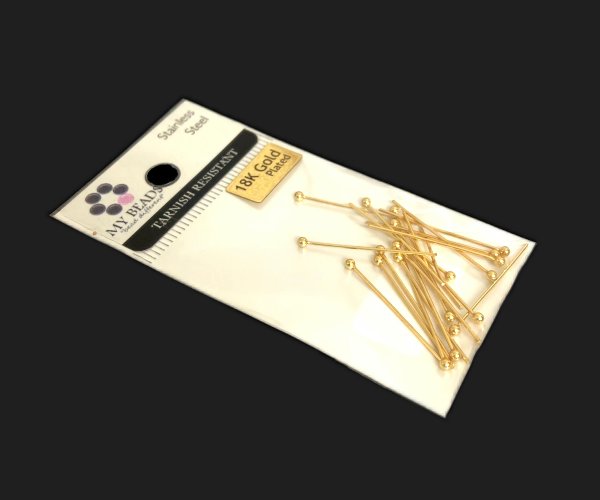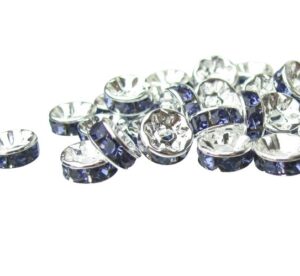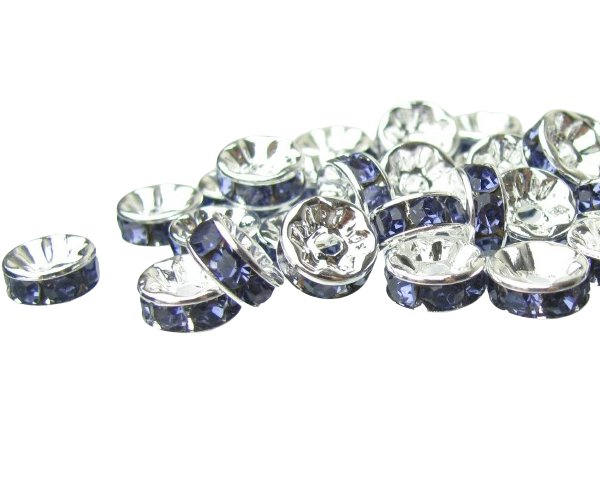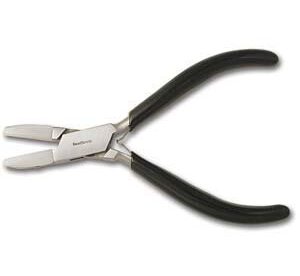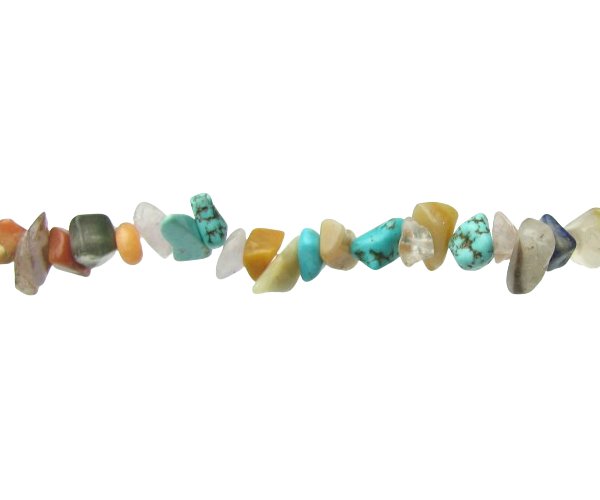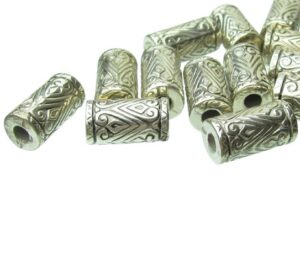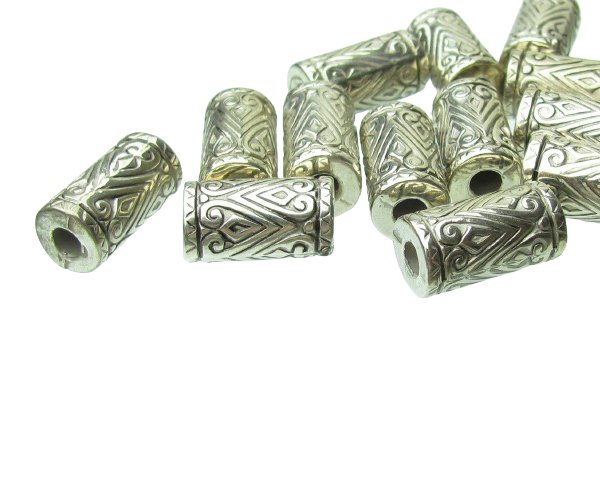Description
High quality, tarnish-resistant findings. These are durable rust & tarnish resistant 304 Stainless Steel, with a genuine 18K Gold plating.
Please note: all of our tarnish-resistant findings are of a very high quality, and have superior tarnish resistance compared to standard findings. However, please keep in mind these findings are tarnish-resistant, not tarnish proof. Please find more information below regarding the level of tarnish-resistance, the various metal properties, hypoallergenic properties and advice on cleaning and care.
Size: 25mm long, 0.6mm thick
Material: 304 Stainless Steel plated with 18K Gold
Quantity: approx. 20 pins per bag*
*Please note that most of our metal beads and findings are packaged by weight, so quantities are approximate. Thank-you!
Tarnish Resistant Findings FAQ
- Will 18K gold-plated findings tarnish?
- Solid 24K Gold will not tarnish; however as a metal it is very soft, so is not the most durable material to make jewellery out of. 18K Gold contains approximately 75% gold and 25% of a mixture of alloys. These alloys help to harden the metal, and result in a much more durable product. Because of the high percentage of real gold, 18K gold is highly resistant to tarnishing.
- Will 925 Sterling Silver plated findings tarnish?
- Sterling Silver will tarnish. However, the rate at which is tarnishes is much slower than ‘silver coloured’ findings. Often, when people refer to tarnishing, what they really mean is a general discoloration (and sometimes rusting) of the metal. Sterling Silver will become slightly duller, and eventually grey as it tarnishes. The tarnish on Sterling Silver is caused by a chemical oxidation process, and can be reversed without losing any of the silver plating by using the cleaning method detailed at the bottom of this page.
- Oil helps protect Sterling Silver from the oxidation process, so wearing Sterling Silver will actually help prevent tarnishing. It also stands to reason then that cleaning sterling silver with detergent is the worst thing you can do to prevent tarnish; the detergent will break down and remove all traces of oil and leave it wide open to the oxidation process. Keep Sterling Silver away from moisture, too, such as sweat, showers or swimming.
- Will Rose Gold plated findings tarnish?
- Rose Gold is an alloy made from a combination of real gold and a copper alloy. It is the copper that gives the red/pink hue. Because of the high percentage of gold, Rose gold is highly resistant to tarnishing. However, due to the 25% copper alloy content, people whose skin reacts to copper may notice a green discoloration on their skin. For these people, Rose Gold is not recommended.
- Why Stainless Steel and Brass as the base metal?
- Stainless steel is a perfect choice for the base metal of findings, as not only is it highly durable, tarnish-resistant and water-resistant, but it is also naturally hypoallergenic. Stainless steel contains Chromium, which creates a film-like barrier over the metal, which protects the metal from rust and tarnish, and also protects the wearer from the metal (all stainless steel contains a small percentage of the well-known irritant nickel, but this protective barrier means this nickel does not come in contact with skin).
- Brass is also a very durable base metal that will not rust, which is why it is so often used in marine applications. Brass absolutely does tarnish (as anyone who have ever had an old brass candlestick will know!). It is the precious metal plating over the brass that provides the tarnish-resistant & hypoallergenic properties of our brass based findings.
- Are these findings hypoallergenic?
- The term hypoallergenic means the jewellery is below the normal level of allergenic. So by that metric, all of our tarnish-resistant range is hypoallergenic. However, it is not quite as simple as that! Read on for more info.
- 18K Gold does contain a small percentage of the irritant Nickel. Nickel is added to the very soft gold metal to provide durability and strength. For the vast majority of people, this extremely low level poses no problem at all. Most people who have a known highly-sensitive allergy will know if they can tolerate 18K or not.
- Sterling silver does not contain nickel, so it is less likely to cause a reaction than other metals.
- Rose Gold does not contain nickel, so generally will not be a problem for people with a nickel allergy. However as mentioned above, Rose Gold does contain a high percentage of copper, so this could be a problem for those who react to copper (skin may turn green).
- It is important to keep in mind that different people will react to different metals. Some people will react to solid gold or sterling silver, while being fine with cheap costume jewellery (and vice versa). Some people even react to 304 stainless & 316 surgical steel stainless steel which is shown in studies to be highly hypoallergenic. This information is provided as a guide only, and we suggest you do further research if this interests you!
- Cleaning and Care
- It is a good idea to always remove your jewellery before swimming, showering or if sweating. (The 18K gold plated stainless steel will hold up quite well in water, but other chemicals in the water may not be good for your jewellery so it’s always a good idea to remove jewellery before swimming).
- Remove jewellery before using cleaning products, and avoid spraying perfume or applying make-up/creams while wearing your jewellery.
- Carefully store your jewellery in their own bags. This is particularly useful for gold jewellery as it is softer and more likely to scratch. Keeping sterling silver in an airtight zip-lock bag will help reduce the oxidation process. There are also anti-tarnish silver tabs that can go in with the bag to help prevent tarnishing.
- To clean silver without rubbing off any of the plating, we recommend the following:
- Take a glass or ceramic dish or baking pan and line with aluminium foil (shiny side up).
- Boil some water.
- To the lined tray, add one tablespoon of baking soda and one tablespoon of salt for every one cup of boiling water.
- Lay your silver jewellery carefully in the tray.
- Leave for about 10 minutes. If the jewellery is still tarnished, you can repeat this process.
- To clean gold:
- Gold/Rose Gold does not oxidise in the same way that silver does, so removing the oil on gold is not a problem.
- We recommend a very mild/diluted detergent (nothing abrasive like toothpaste or Jif!), mixed with warm water and a soft wash cloth. Remember that it is gold plate, so you don’t want to rub to harshly or use anything abrasive.
